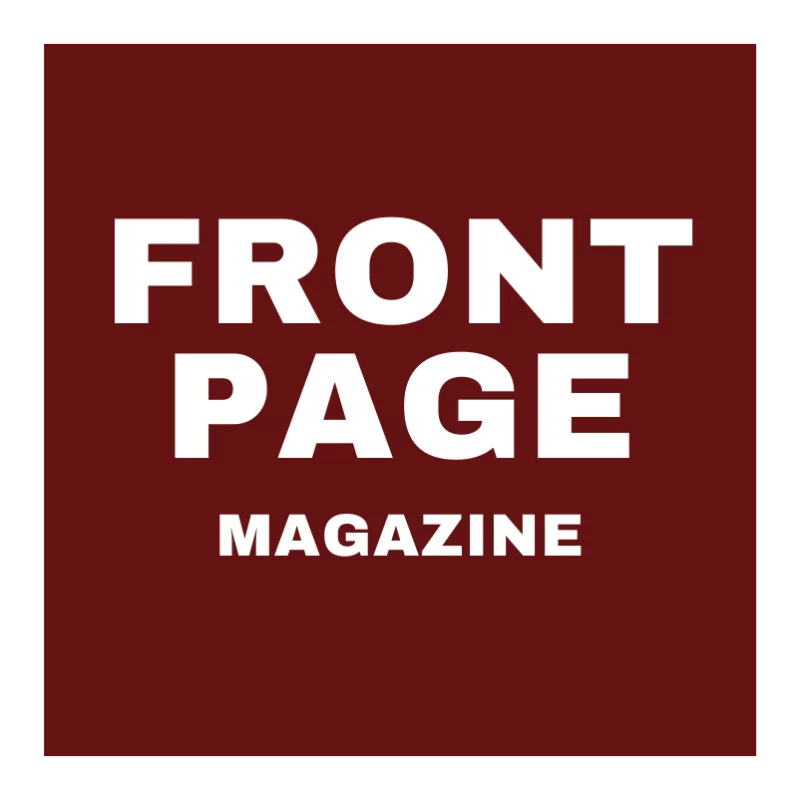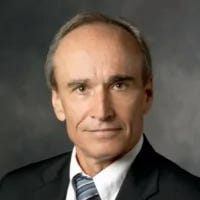December 19, 2023 by Bruce Thornton
Having spent more than half a century in universities, I wasn’t shocked or even surprised by the despicable display of craven obeisance to illiberal ideologies on the part of presidents of three of our most prestigious universities. Even their hypocritical rationalization for homicidal antisemitism using a defense of the First Amendment––which all three campuses for decades have violated when it comes to conservatives and other dissidents––didn’t raise an eyebrow.
After all, the predicates for this shameful spectacle have long been developing in our diseased groves of academe. Now the plague has become terminal, and the American university may never recover.
For at least a century, the obvious source of corruption of the university’s traditional mission to prepare young minds for ordered liberty, has come mainly from Marxism, these days mostly in its tactical guise of Cultural Marxism. Ethnonationalist passions like fascism and Nazism were other vectors of the virus, as French writer Julien Benda noted in his 1926 book The Treason of the Clerks.
All these political pathologies corrupted intellectuals and professors, Benda argues, who sacrificed their vocation to seek truth, in order to gain “practical advantages,” fulfill the “desire to abase the values of knowledge before the values of action,” and promote the idea that “politics decides morality”––nearly a century later, a succinct definition of today’s “woke” leftism and “critical race theory.”
In our times, this leftist politicization has been worsened by the rise of identity politics. The movements to remove illiberal restrictions on various Americans who had been denied their unalienable rights, especially black Americans, soon became tools of factional political power and leverage. A narrative of endemic white, male, heterosexual oppression and guilt arose, and demanded compensatory policies and programs for its victims. Discrimination, once the prime evil to be battled, became a political weapon codified in federal laws. The goal was to pursue the left’s program of establishing a technocracy of concentrated powers at the expense of the Constitution’s divided and balanced powers.
Universities, backed by the courts and government agencies, soon became a critical institution for achieving this goal by formulating and promulgating politicized curricula and discriminatory campus policies. A repressive orthodoxy of ideas took over universities through “diversity,” “multiculturalism,” “political correctness,” and now “woke” policies like Diversity, Equity, and Inclusion, and toxic ideas like “systemic racism” that teach discriminatory, politicized, intellectually incoherent and daft ideas.
Moreover, all these bad ideas were backed by speech codes, “cancel culture” to silence dissidents and violators of orthodoxy, and other systemic assaults on the First Amendment and academic freedom––all inspired by the Frankfurt School’s Herbert Marcuse and his sinister notion of “Repressive Tolerance,” the idea that “Certain things cannot be said, certain ideas cannot be expressed, certain policies cannot be proposed.”
Next, starting in the Sixties, the fads of the “higher nonsense” like “poststructuralism” and “postmodernism” began to colonize and dominate the universities, especially the humanities and social “sciences” like history. Esoteric philosophical questions about linguistics, epistemology, and ontology were subjected to a radical, low-rent Nietzschean nihilism.
Academic practitioners of these fads soon generated paradoxical slogans and incoherent assertions. For example, human identity and free will are illusions, trapped in the prisons of various determinisms––economic, linguistic, racial, social, cultural–– that are erected and perpetuated by the capitalist hegemons of oppressive power.
Most absurd is that the authors of this postmodern exegesis across multiple academic discipline are mostly card-carrying leftist activists who relentlessly virtue-signal their “commitment” to the “oppressed” victims of “white supremacists,” the “patriarchy,” “Islamophobia,” and “cisnormativity”–– but obviously not so much antisemitism, history’s most lethal oppression. No wonder that 51% of 18-to-24-year-olds support Hama’s goal to eliminate Israel, and 60% believed Hamas’s savagery on October 7 was justified.
In addition to decrying all these crimes, our postmodern crusaders also flaunt like peacocks their passionate efforts to liberate these victims and restore their “human rights” and “social justice. But if we believe Jacques Derrida’s famous “there is no outside-text,” aren’t all these crimes and ideals mere verbal constructs, arbitrary signifiers dancing over the abyss of nothingness? Or as British novelist David Lodge quipped, isn’t poststructuralism an exercise in sawing off the branch they’re sitting on? And does not our current chaos rather confirm Orwell’s 1940 judgement of modernity’s utopian hubris: “For two hundred years we sawed and sawed the branch we were sitting on. . . and down we fell. But unfortunately there had been a little mistake. The thing at the bottom was not a bed of roses at all, it was a cesspool full of barbed wire.”
Moreover, despite the noisy claims of liberating the oppressed in their jargon-ridden prose, these postmodern politics and ideologies, like their earlier iteration “political correctness,” is what historian Russel Jacoby has called “symbolic politics, a replacement for, and diversion from, the gritty politics of the community and the streets.” Revolutions aren’t won from the comfort of the graduate seminar room, or the conference hotel ballroom.
And the most pernicious, and cited in other work, example of this philistine assault on traditional disciplines and truth, has been Edward Said’s Orientalism, “a work,” historian of the Middle East Robert Irwin wrote, “in which it is hard to distinguish honest mistakes from willful misrepresentations.”
Said channeled Michel Foucauld’s sophomoric radical relativism and his notion of “discursive formations,” the claim that academic “truth” is a construct of power that serves its interests, especially colonialism and imperialism––“a Western style for dominating, restructuring, and having authority over the Orient.” Said never got around to explicating “Occidentalism,” Islam’s “style” for inflicting all those same evils on the West for a thousand years.
The worst effects of this academic nonsense were the ideological distortions, naïve misunderstandings, or sheer ignorance of Islamic precepts, doctrines, and history. As Martin Kramer wrote in his indispensable study Ivory Towers on Sand, Said’s work “crippled” the discipline of Middle Eastern Studies, “which came under a take-no-prisoners assault,” which “rejected the idea of objective standards, disguised the vice of politicization as the virtue of commitment, and replaced proficiency with ideology”––an exact description of most of today’s universities.
As a result, Kramer continues, before 9/11, Middle East Studies professors “failed to ask the right questions, at the right times, about Islamism. They underestimated its impact in the 1980s; the misrepresentation of its role in the early 1990s; and they glossed over its growing potential for terrorism against America in the late 1990s. Twenty years of denial had produced mostly banalities about American bias and ignorance, and fantasies about Islamists as democratizers and reformers.”
Another malign consequence of Said’s work has been the idealization of the Palestinian Arabs, alleged victims of Western colonialism and its “client” Israel. As we are seeing today, such dishonest apologetics have justified the resurgence of antisemitism and celebrations of genocide, as well as the despicable display we witnessed of three presidents of prestigious universities publicly indulging specious sophistries in order to avoid criticizing those student protestors who champion the Holocaust and carry water for the savage butchery of Hamas.
But it’s not all about ideology. We can’t forget the grubby careerism and hustling that permeate academe from professors to administrators––the latter of whom have metastasized thanks to government sponsored, unconstitutional policies and practices like affirmative action; campus sexual assault investigative rules and star chamber inquisitions, and now the “systemic racism” of DEI training programs.
Indeed, as Forbes reported in August, “Between 1976 and 2018, full-time administrators and other professionals employed by those institutions increased by 164% and 452%, respectively. Meanwhile, the number of full-time faculty employed at colleges and universities in the U.S. increased by only 92%, marginally outpacing student enrollment which grew by 78%.”
But for decades professors also have put careerism and self-advancement ahead of their calling to graduate students with minds capable of pursuing truth and recognizing sound arguments. As Camille Paglia more than 30 years ago wrote in her brilliant essay “Junk Bonds and Corporate Raider: Academe in the Hour of the Wolf,” all these academic faddists are “company men . . . Rosencrantz and Guildensterns, privileged opportunists who rode the wave of fashion.”
Postructuralism and multiculturalism, then, long ago consummated academe’s unholy union of Marx and Mammon; today “woke” REI provides even more territories that academics on the make can colonize, and from which they extract resources like grant money, promotion, tenure, low course loads, helot graduate assistants, and frequent time off from teaching paid for by sabbaticals, as they hustle to acquire even more prestigious and remunerative academic billets, including administrative positions.
Professors, in short, have become what social critic Harold Fromm has called “academic capitalists . . . consumers, trendies, exploiters-beneficiaries of ‘capitalism,’” not “St. Francis monks in hair shirts renouncing the evils of ‘capitalism’ on which they in fact thrive as they race about to conferences in jet planes” and “barter their articles and books for upward mobility in the academy”–– even as they proclaim “stylized moral jeremiads as coin to obtain yet a bigger share of the very spoils that are being denounced.” Meanwhile, grade inflation and a drastic reduction of pedagogical standards even at our so-called “prestige” universities have turbo-powered all these dysfunctions.
Finally, K-12 education has been severely damaged by the universities’ corruption. Public school teachers are certified by universities and more typically state colleges. Prospective teachers take courses in their subject areas and General Education requirements, both of which are steeped in leftist, postmodern politics and ideology. Primary and high school teachers thus become vectors of these toxic ideas.
Over the decades, these politicized curricula have displaced traditional disciplines and intellectual skills necessary for a genuine liberal education for freedom. As Alan Bloom has written,
“[T]he only kind of education that really deserves the name liberalis . . . is the one that makes its pupils free, able to take charge of their own thought and to conduct a critical examination of their society’s norms and traditions . . . .” Such students will be free “because they can call their minds their own . . . . They have looked into themselves and developed the ability to separate mere habit and convention from what they can defend by argument.”
Does such critical self-examination appear to characterize the students and professors repeating the stale propaganda of bad history and incoherent, morally idiotic ideologies?
In the end, the most destructive consequences of Marxist influence, postmodern higher nonsense, and rank careerism have been the diminishment of the traditional mission of liberal studies famously defined by Matthew Arnold: to encourage “the free play of the mind on all subjects,” and to foster the “instinct prompting [the mind] to know the best that is known and thought in the world, irrespective of practice, politics, and everything of the kind, and to value knowledge and thought as they approach this best, without intrusion of any other considerations whatever.”
Deprived of this justifying purpose, higher education has failed not only to teach “the best that is known and thought,” but also the purpose of that lesson: “and through this knowledge,” Arnold continues, “turning a stream of fresh and free thought upon our stock notions and habits, which we now follow staunchly but mechanically.”
Today’s American universities are constricted by fossilized orthodoxies, leftist shibboleths, the postmodern “higher nonsense,” lupine professors, and terminally mediocre managers. They are kept afloat by taxpayer money, plutocratic donors, and extravagant tuition price-tags, will not disappear despite the loss of their noble mission to seek truth and teach “the best that has been know and thought in the world” that sustains our civilization and freedom.
They may not disappear, but they are dead men walking.
Bruce S. Thornton is a Shillman Journalism Fellow at the David Horowitz Freedom Center, an emeritus professor of classics and humanities at California State University, Fresno, and a research fellow at the Hoover Institution. His latest book is Democracy’s Dangers and Discontents: The Tyranny of the Majority from the Greeks to Obama.
https://www.frontpagemag.com/the-american-university-rip/?utm_source=FrontPage+Magazine&utm_campaign=8f7829a387-EMAIL_CAMPAIGN_2023_12_19_04_48&utm_medium=email&utm_term=0_57e32c1dad-8f7829a387-%5BLIST_EMAIL_ID%5D&mc_cid=8f7829a387&mc_eid=fc0b03eff3






